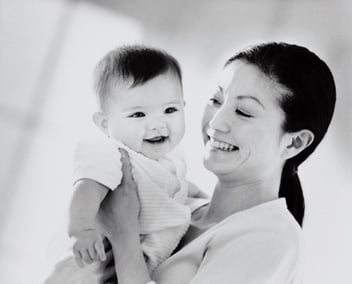Women outpace men in applications, first-year students and enrolled students
In 1849, Elizabeth Blackwell became the first woman in the U.S. to be granted a medical degree. She attended Geneva Medical College in western New York.1
Blackwell eventually co-founded the New York Infirmary for Indigent Women and Children to serve the poor and created the Woman’s Medical College of the New York Infirmary to support and encourage women to pursue careers in medicine. She was born in England in 1821 and her family moved to the U.S. in 1832.2

Women made up 56.5% of all applicants to U.S. medical schools in 2022
Today, women make up 37% of U.S. physicians,3 compared to just 5% in 1970.4
But more women are applying to and entering medical school than ever before. Women made up 56.5% of all applicants to U.S. medical schools in 2022 and women applicants are up by 49% since 2012. Over 31,000 women applied last year and about 43% of all medical school applicants were accepted.5
Women comprised the majority of enrolled U.S. medical students for the first time in 2019. And two years earlier, women reached the milestone of comprising the majority of first-year medical students.6 Nearly six in 10 students enrolled in undergraduate programs are women,7 so the increased number of medical students follows the overall trend in higher education in the U.S.
Continued growth in diverse applicants to medical schools is critical and the total number of enrolled medical students has grown by over one-third in the past 20 years.8 Yet, there is still a projected shortage of physicians in the future due to the growing aging population.
Number of full-time women faculty members continues to rise, but work remains
The overall proportion of full-time women faculty at medical schools has continued to rise since 2009 with similar increases at each faculty rank. But women only make up a majority of faculty at the instructor rank.9 Academic healthcare workforce diversity is important in addressing health disparities.
In 2008, the NIH recognized that more funding was granted to senior scientists and its New Investigator policy was modified to enhance success for early-stage investigators, which include more women and individuals from minority populations. In 2019, 34% of NIH grants were awarded to women, up from 28% 10 years earlier.10
AMA policies aimed at advancing women in medicine
The American Medical Association (AMA) has adopted many policies aimed at medical associations and organizations to study gender differences in income and advancement trends by specialty, experience, work hours and other practice characteristics. For example, the AMA Women Physicians Section (AMA-WPS) consists of over 100,000 members of the AMA and sets out to increase the number and influence of women physicians in leadership roles and to understand women’s health issues.11
Resources:
1Celebrating 10 Women Medical Pioneers, AAMC
2Elizabeth Blackwell, National Women’s History Museum
3Share of Female Physicians in the U.S. in 2022 by State, Statista
4The History of Women in Surgery, National Library of Medicine
5The Nation’s Medical Schools Grow More Diverse, AAMC
6The Majority of U.S. Medical Students Are Women, New Data Show, AAMC
7Women Now Make Up Almost 60% of College Students – An All-Time High, Fast Company
8The Majority of U.S. Medical Student Are Women, New Data Show, AAMC
9The State of Women in Academic Medicine, AAMC
11Women in Medical Schools: Dig Into the Latest Record-Breaking Numbers, AMA



Share Article